Edogawa Craft Stories

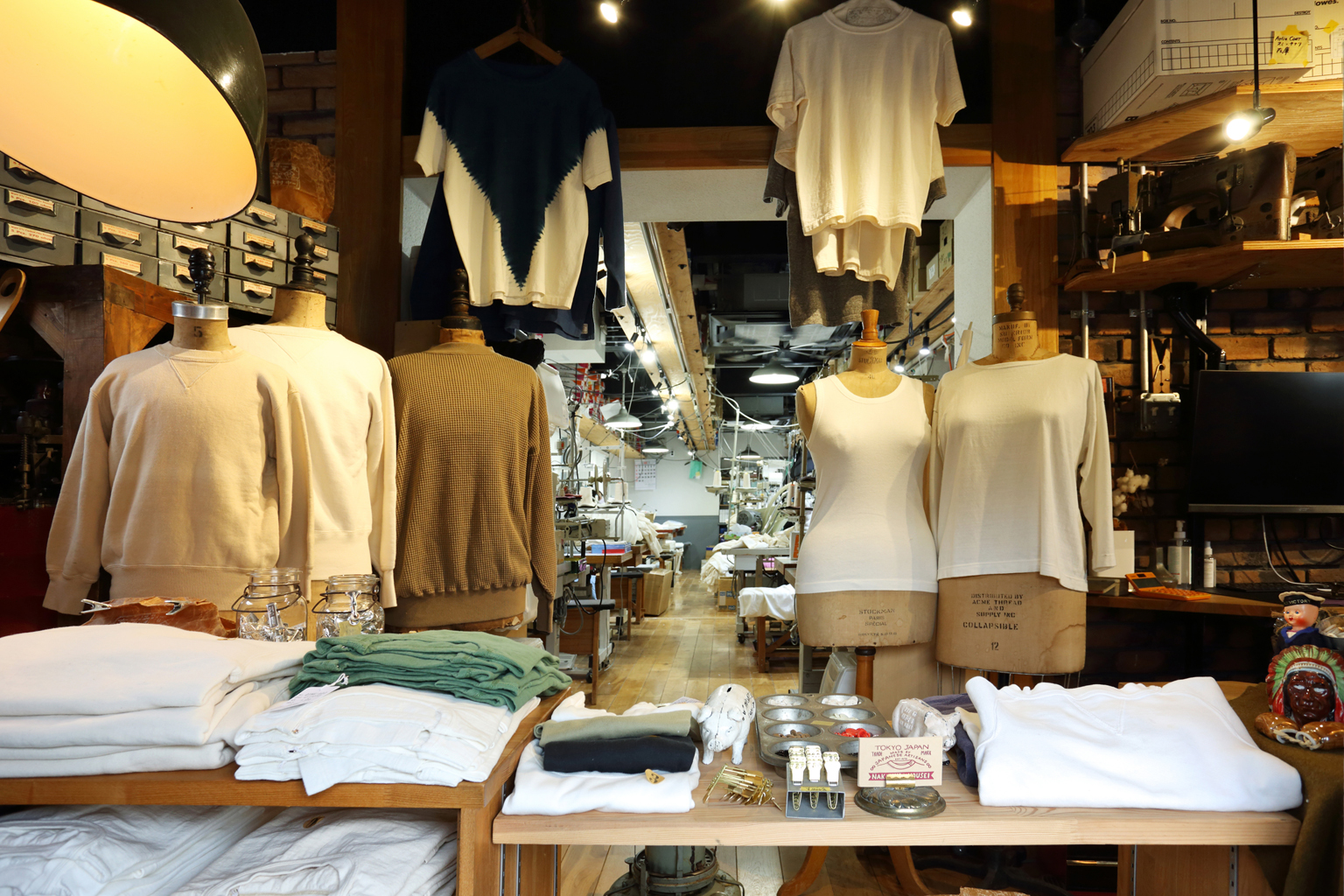
Meriyasu: Stitching the Wisdom of the Past into Clothes Culture
Since 1970, Nakamura Hosei has specialized in producing cut-and-sew garments in Edogawa City. For over 50 years, dating back to when knit fabric was still known by its older name, meriyasu, this small factory has produced high-quality apparel, one stitch at a time.
Now led by second-generation president Nakamura Takayoshi, the company has evolved into a full-service operation capable of handling everything from fabric development and pattern drafting to cutting and sewing. Guided by the spirit of “Made in Japan” and the principle of “learning from the past to innovate the future,” the workshop continues to pursue clothing that’s made to last.
Like Playing Jazz: Breathing Soul into Fabric
Tucked into a quiet residential neighborhood in Mizue, Edogawa City, Nakamura Hosei’s modern workshop hums with rows of sewing machines and the quiet concentration of its nuiko-san, the name for its highly skilled sewing artisans. Founded by Nakamura’s parents, the business has always focused on one thing: meriyasu (knit fabrics).
“When my father was 16, he moved from Nagano to Tokyo and apprenticed in Sumida City’s textile industry for over a decade,” says Nakamura. “Eventually he married my mother, who was also from his hometown, and the two of them started a sewing business in Sumida with just one sewing machine. Their neighbor was a cutting specialist, so they’d slide fabric through the window like something out of a Showa-era film. That lasted about two years. They moved to Edogawa City when they officially founded the company in 1970, and ever since, we’ve been sewing meriyasu here.”
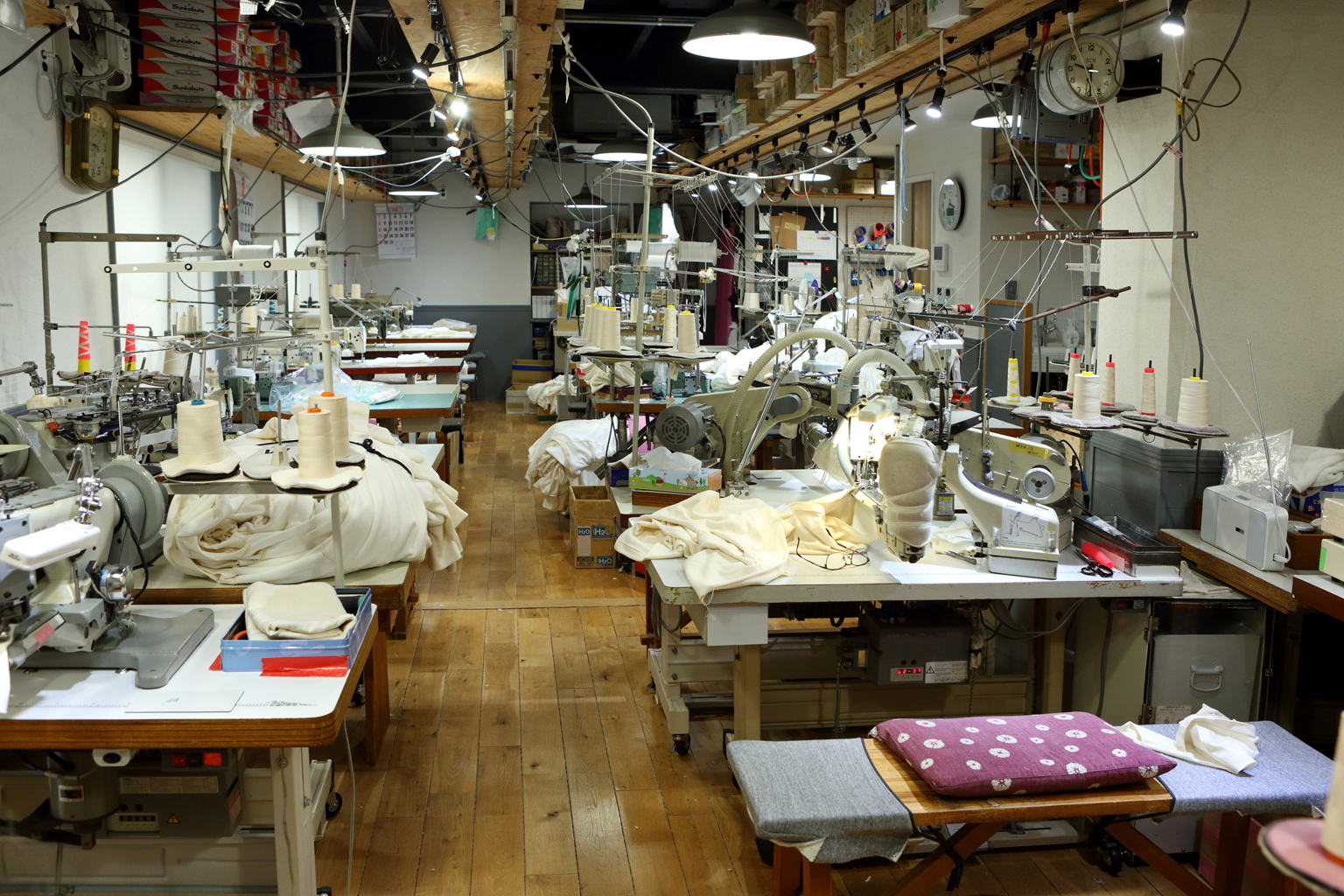
The sewing line on the first floor features an array of threads and specialty machines. While some garments are sewn using undyed meriyasu fabric, others are sewn first and then dyed afterward.
So, what is meriyasu? It’s a stretchy knit fabric, usually made from cotton or wool, produced by machine knitting. While today we often refer to such fabrics as “cut-and-sew,” meriyasu remains familiar to many through items like T-shirts, sweatshirts, and underwear. The word’s origins trace back to the Spanish medias, and in Japanese kanji, it’s written as “莫大小”—a play on words suggesting “neither big nor small,” or “stretchable.” In Wakayama Prefecture, one of Japan’s leading meriyasu hubs, calling someone “a meriyasu kind of guy” implies a laid-back nature.
Nakamura Hosei mainly manufactures cut-and-sew pieces for apparel brands as an original equipment manufacturer, but what makes the company unique is its integrated approach. In today’s industry, where garment production is heavily compartmentalized, most sewing factories focus solely on sewing. But Nakamura Hosei handles the entire process, from fabric development and pattern making to cutting, sewing, finishing, and even dyeing—all in collaboration with select partner factories.
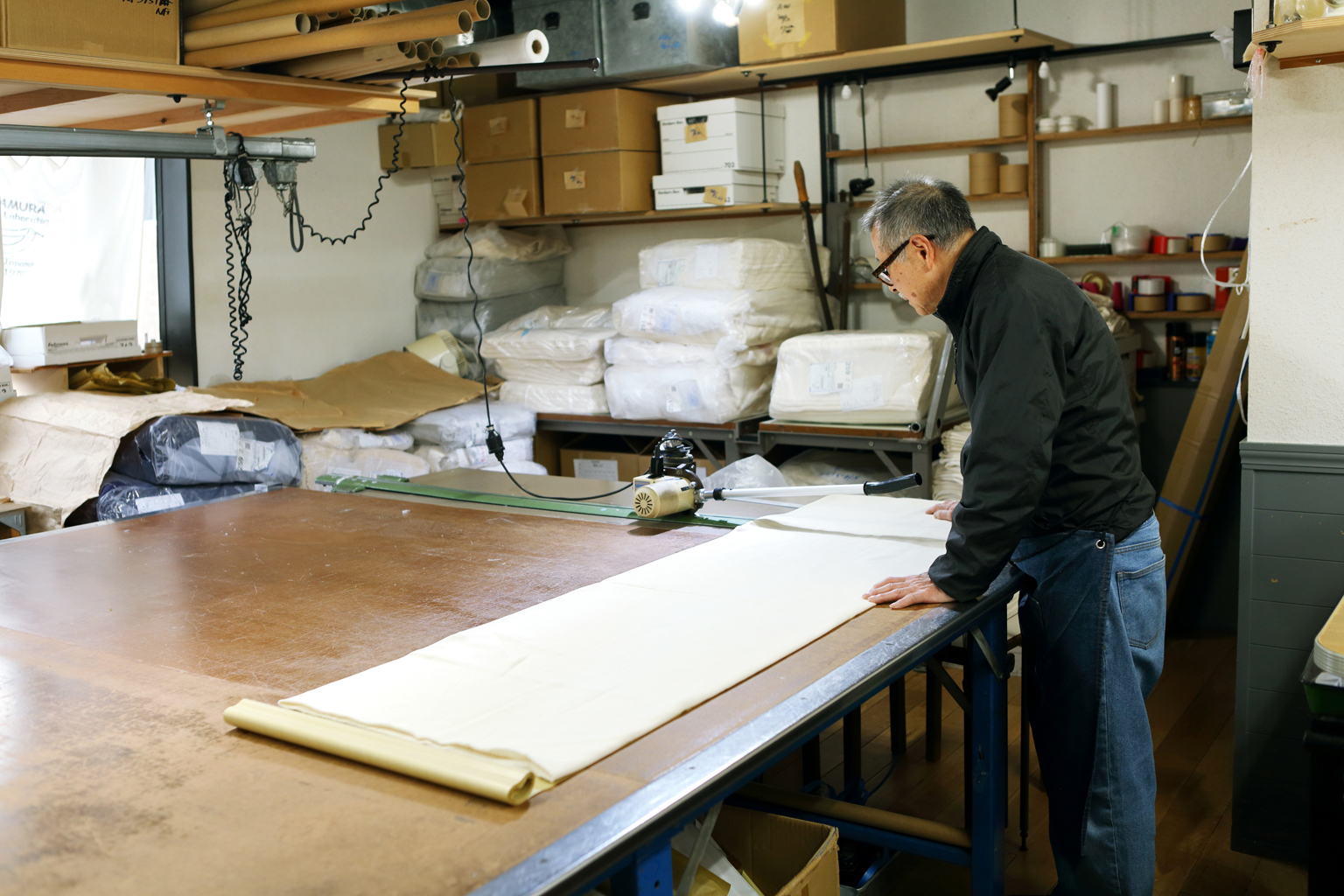
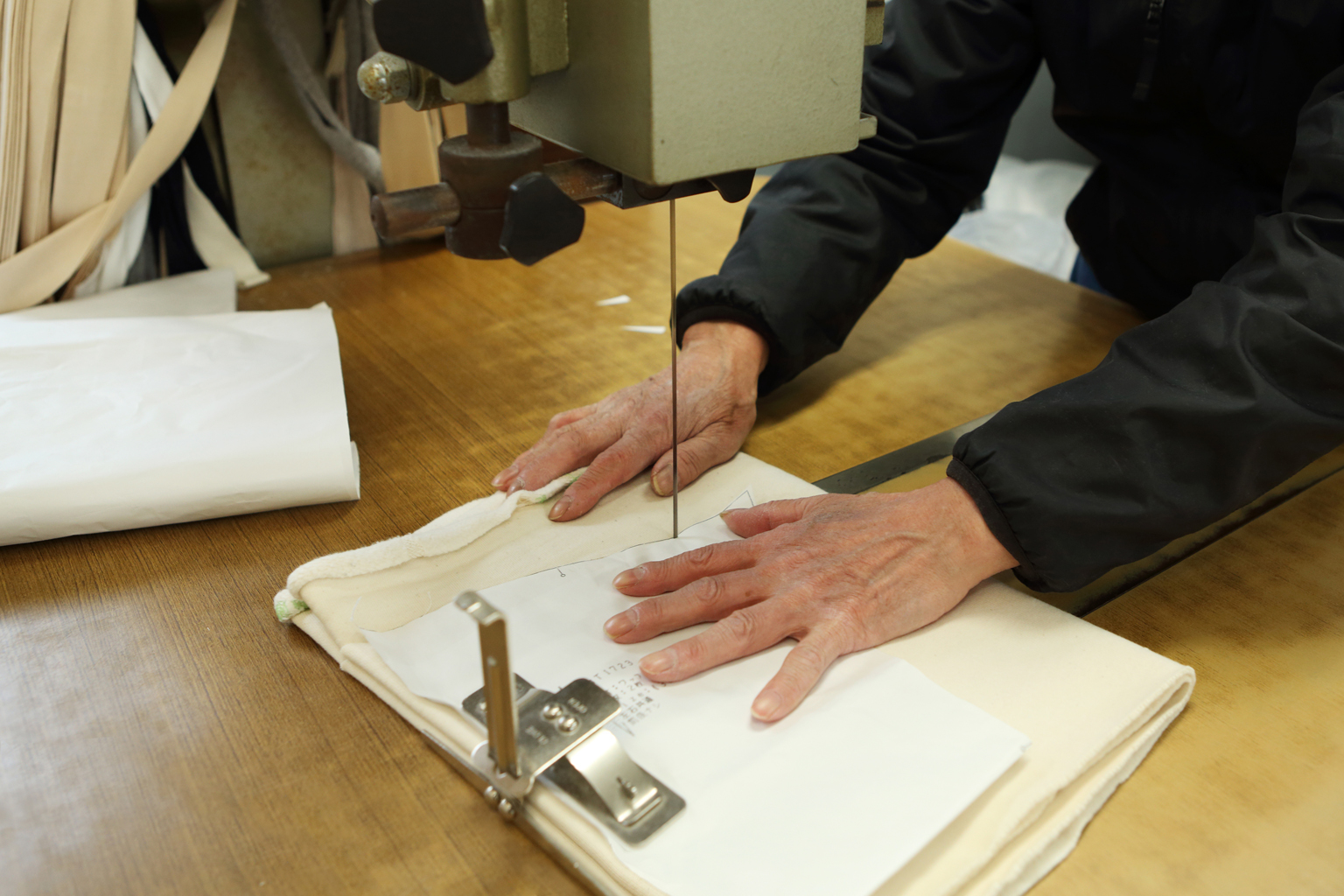
In the cutting room upstairs, a skilled cutter uses a jigsaw-like blade to trim fabric according to custom patterns. Working with tubular knits stacked in layers, they must cut accurately without distortion or waste, a task that requires experience and finesse.
“Our clients often want a T-shirt that’s more than just a basic—they want something with real substance and character, from fabric to stitching,” says Nakamura. “If a client asks for a custom fabric, we work closely with expert knitters in Wakayama, a region famous for meriyasu, who have a wide variety of knitting machines, including rare loopwheel machines. Together, we match the right yarn, machine, and stitch structure to bring the client’s vision to life.”
Because meriyasu is knit rather than woven, it reacts dramatically to factors like yarn type, gauge, and knitting method. Nakamura collaborates directly with the knitters to translate a customer’s desired texture into a technically feasible and aesthetically satisfying fabric.
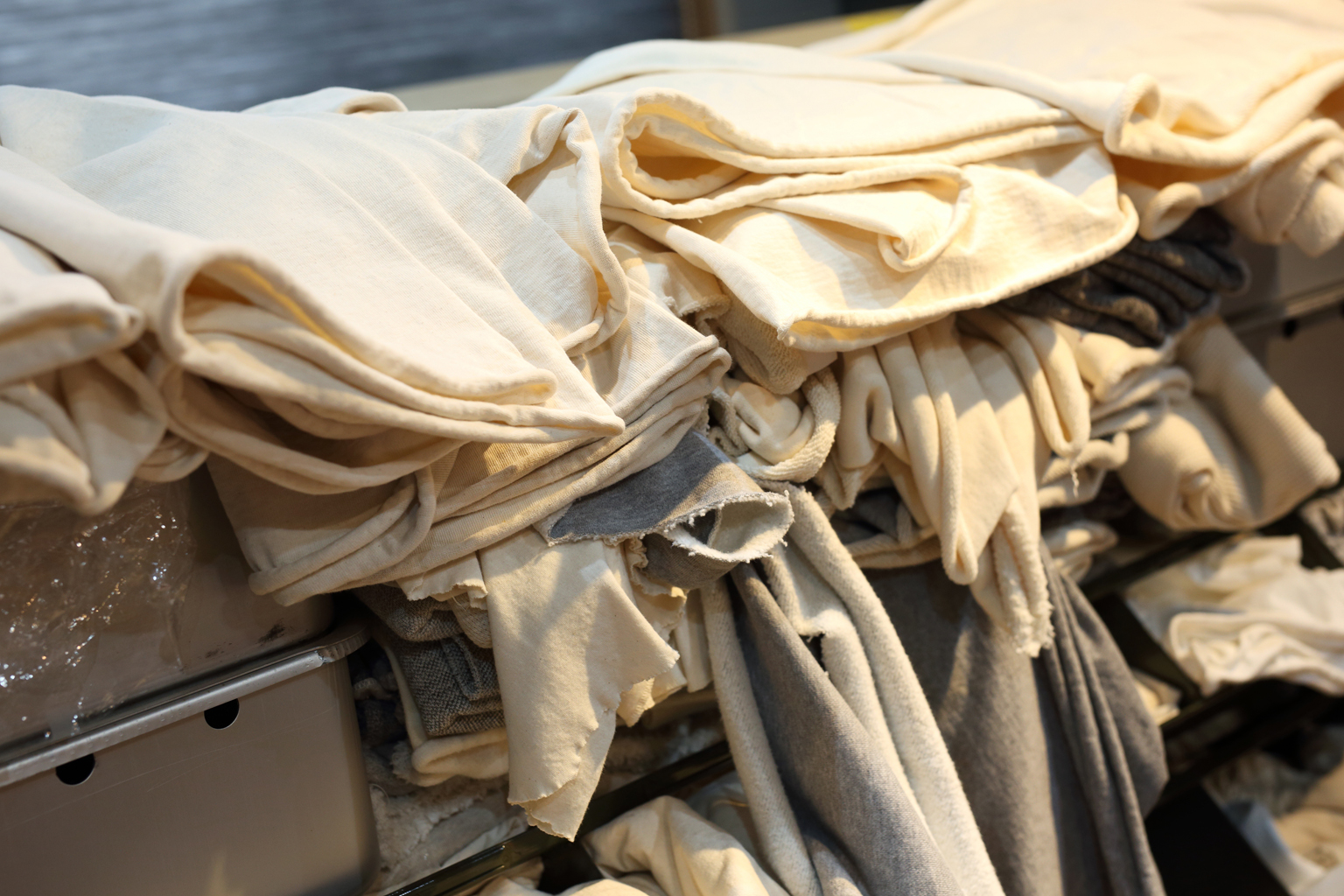
Stacks of fabric samples fill the meeting area. Each one is tagged with information about yarn specifications and knit structure. From soft and drapey to fuzzy and plush, the samples showcase the expressive potential of meriyasu.
The sewing process is no simple matter either. Woven fabrics like dress shirting or denim don’t stretch much, which means you can press them with an iron to set a crease, or apply interfacing to give them structure. But meriyasu, being a knit, naturally stretches and contracts, so the edges curl even when pressed. You also can’t use interfacing, since that would interfere with the fabric’s stretch. Some knits have brushed backs; others are textured with a waffle-like surface. The range of characteristics is remarkably wide.
From how the fabric reacts to washing, to how it might change after dyeing, everything must be anticipated and built into the sewing process. This is where Nakamura sees the essence of meriyasu craftsmanship.
“Woven garments are like classical music,” he says. “There’s a conductor, and everyone follows the score with precision. But meriyasu is jazz. Each artisan, like a musician, interprets the fabric in real time, adjusting their technique while staying in harmony with the whole. That’s the kind of flexibility and intuition we need.”
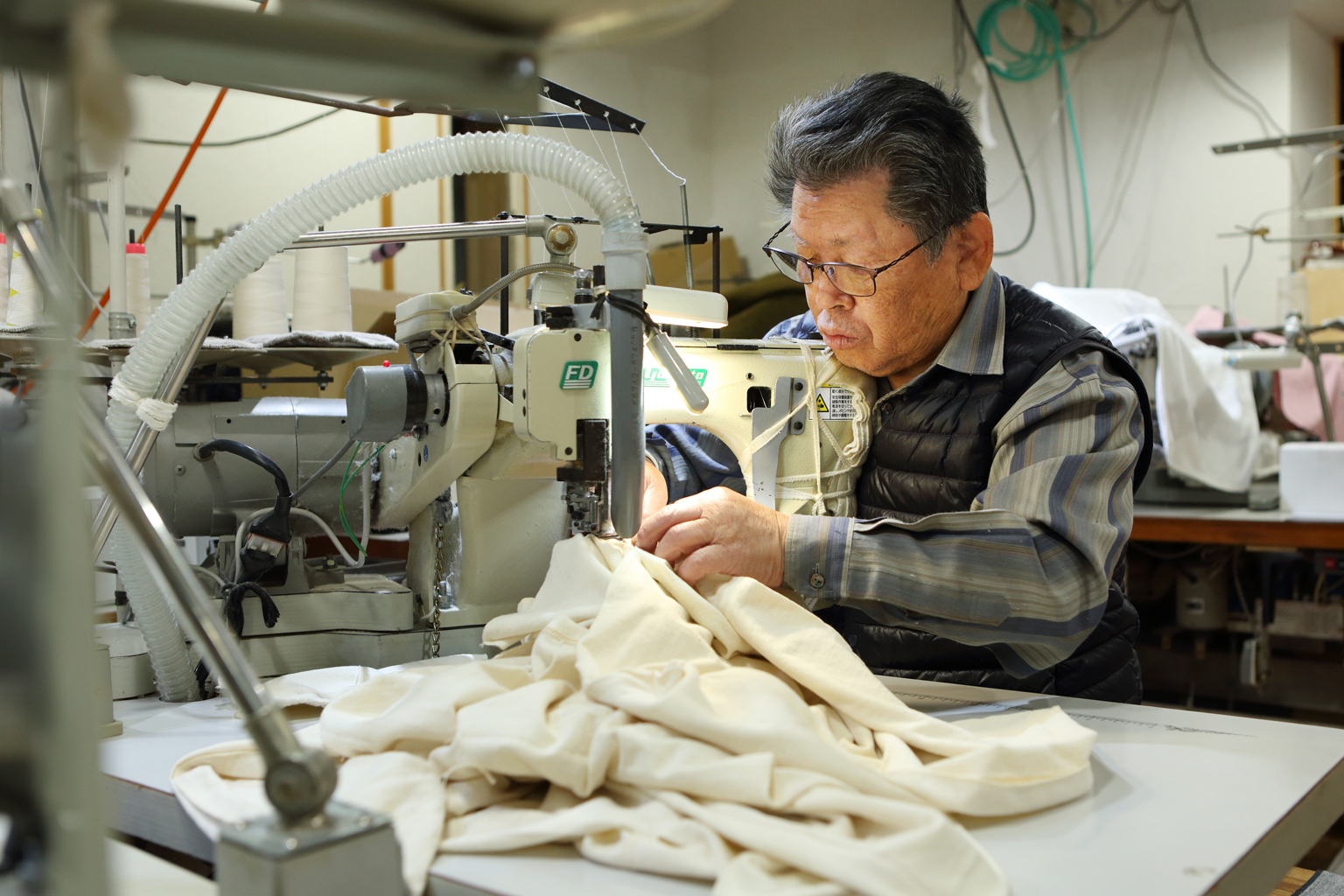
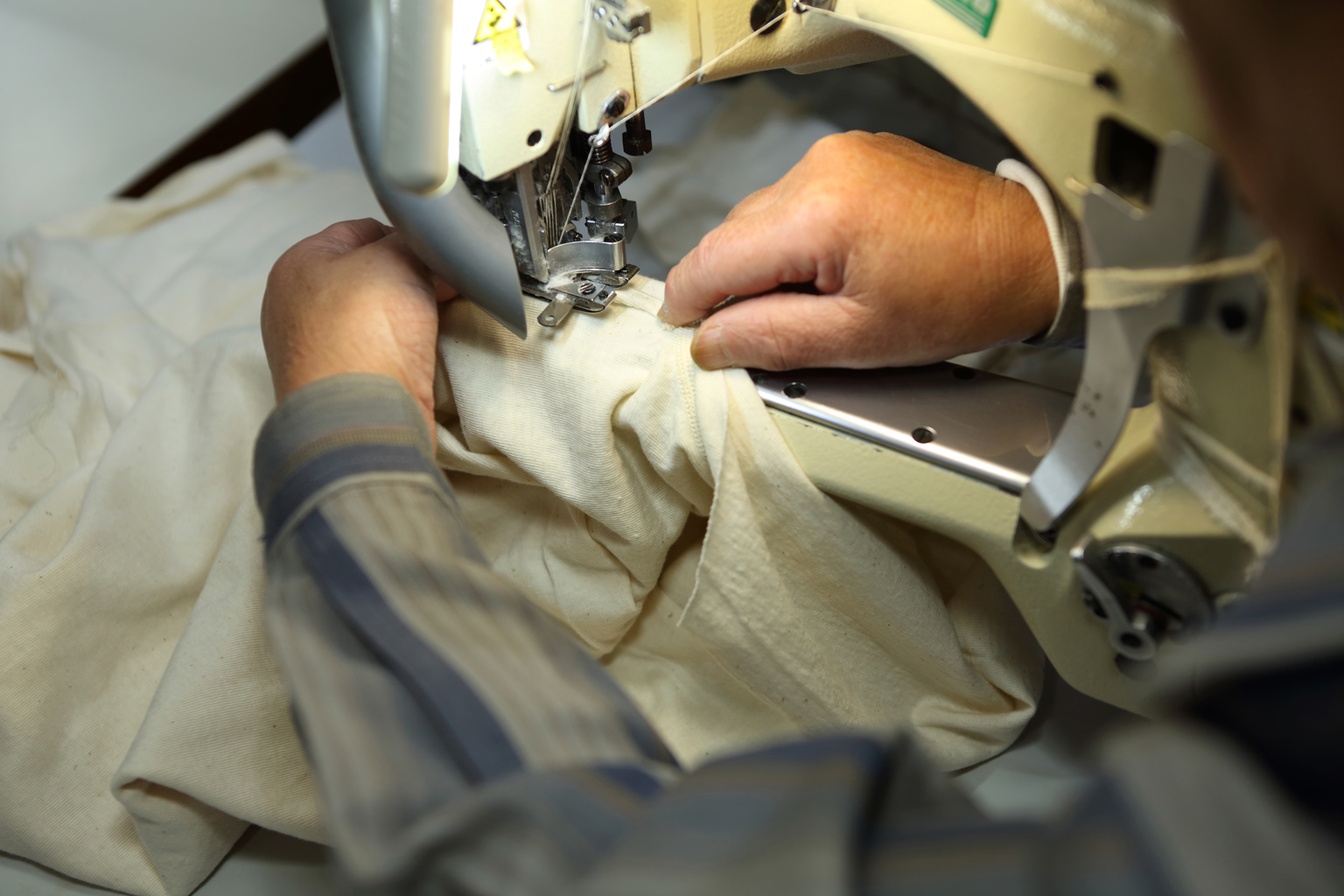
Company founder Nakamura Hidenori, Takayoshi’s father, still contributes on the factory floor as a seasoned seamster. He uses a special flat-seamer machine to join two meriyasu pieces edge-to-edge. The key is to gently stretch the fabric just enough: too much and it warps, too little and it puckers. It is a demanding process that requires fine adjustment to both fabrics characteristics and the rhythm of the sewing machine.
The company stays involved in every step of the process—from receiving an order to delivering the finished product. This thorough, hands-on approach is also reflected in how they work with clients.
“To put it bluntly,” says Nakamura, “we don’t necessarily do exactly what the client tells us. Sometimes, when it comes to fabric and sewing, our ideas actually lead to a better result. The reason we don’t outsource and instead do everything in-house is because we want to eliminate anything that might dilute the integrity of the quality we’re aiming for. That’s why our garments develop character and feel better the more you wear them.”
For Nakamura, the goal is to make clothing that carries lasting value—true to the spirit of Japanese craftsmanship.
Craftsmanship and Wisdom, Alive in Vintage Garments
In a corner of the factory’s meeting space, there’s a carefully curated collection of “old things”—garments and tools that form the very foundation of Nakamura Hosei’s approach to making clothes. In today’s world of advanced technology and ever-increasing production efficiency, why continue to reference these vintage items?
“Just because we can now mass-produce clothing with consistent quality, does that really mean we’ve ‘progressed’? I’m not so sure,” says Nakamura. “Take sewing machines, for instance. Back then, they represented the pinnacle of their era’s technology. You couldn’t have stitches spaced too wide or too narrow, or the needle would break. Craftspeople with tremendous passion worked together, adjusting the stitch width by the millimeter. Every garment was the result of that kind of meticulous, collective effort.”
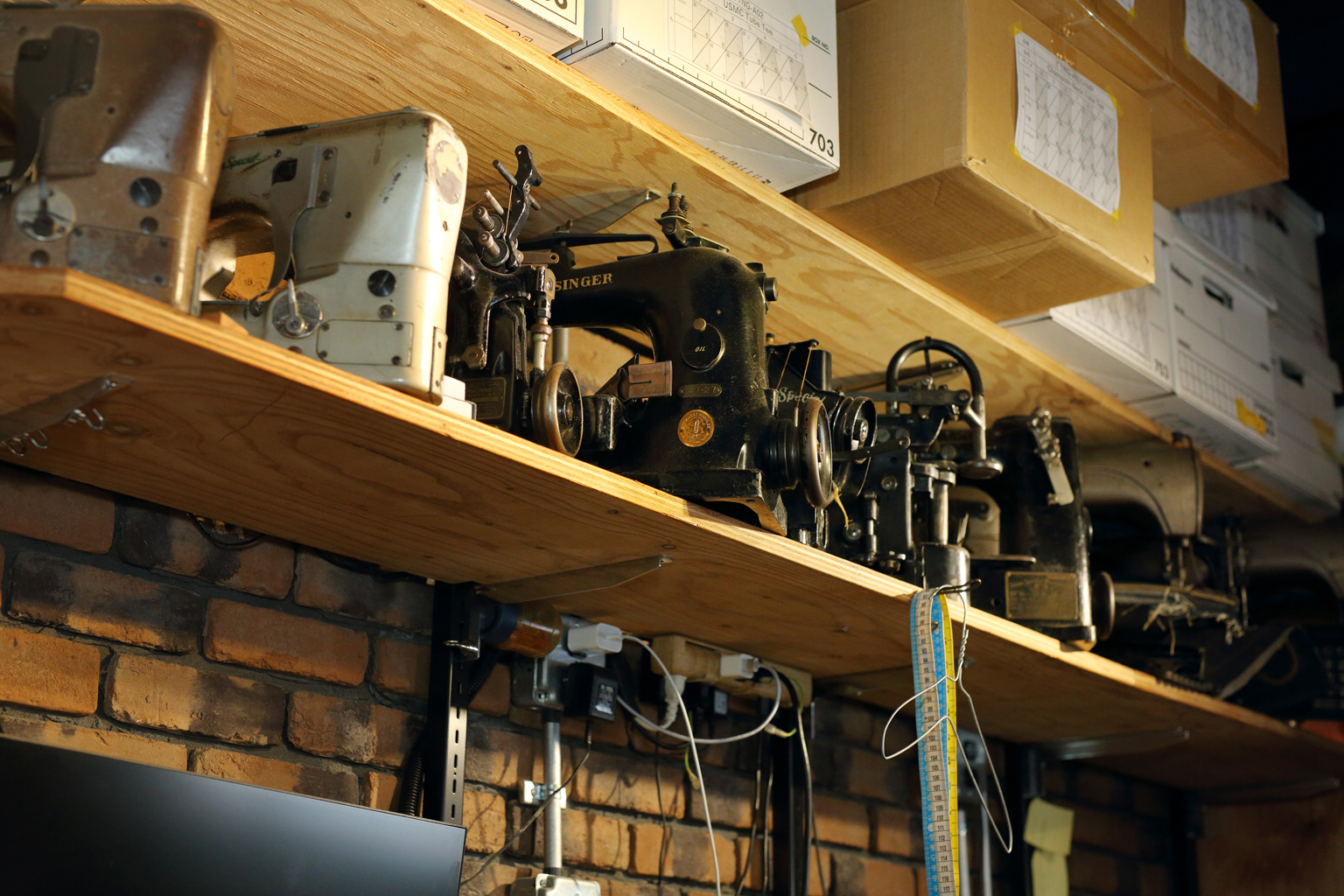
A display of antique sewing machines in a corner of the company’s in-house shop. Beyond their beauty as objects, they inspire reflection on the care and mindset of the craftspeople who used them.
Nakamura explains that when you imagine making clothing in a time without internet, phones, or even stable electricity, you can begin to understand just how thoughtfully garments were made to last.
“Whether it was the fabric or the stitching, everything had integrity. That’s why these garments have held their value decades later; they’re like answers handed down to us. There’s an endless amount we can still learn from them.
But then you have to wonder, are today’s clothes, supposedly made with better technology, going to survive 50 years? Fast fashion, sure, but even some brand-name pieces? I get the sense that many garments being made now will simply disappear with the trends and times.”
What Nakamura Hosei strives to create are clothes that gain value over time. “I want to make things that look great the moment they’re made, and become even more beloved after three years of wear,” Nakamura says with a smile. With expert detailing and timeless design, each piece embodies both enduring craftsmanship and a philosophy of clothing that transcends trends.
What Clothes Mean: In Search of Lasting Value
In 2019, a small retail space opened on the first floor of the factory, named Nakamura Hosei Branch Store: Demise. The shop features original pieces like T-shirts and sweatshirts made with the same meticulous craftsmanship and fabric integrity that vintage garments embody.
“Sewing factories are usually behind the scenes, but I felt there should be a space where we could share the skills and spirit of the makers directly with the people who wear our clothes. Depending on the season and situation, we sometimes even recruit nuiko-san [sewing staff] right from the shop. Because the sewing floor is visible from across the counter, it naturally becomes a place for people interested in clothing or craftsmanship to encounter the work up close.”
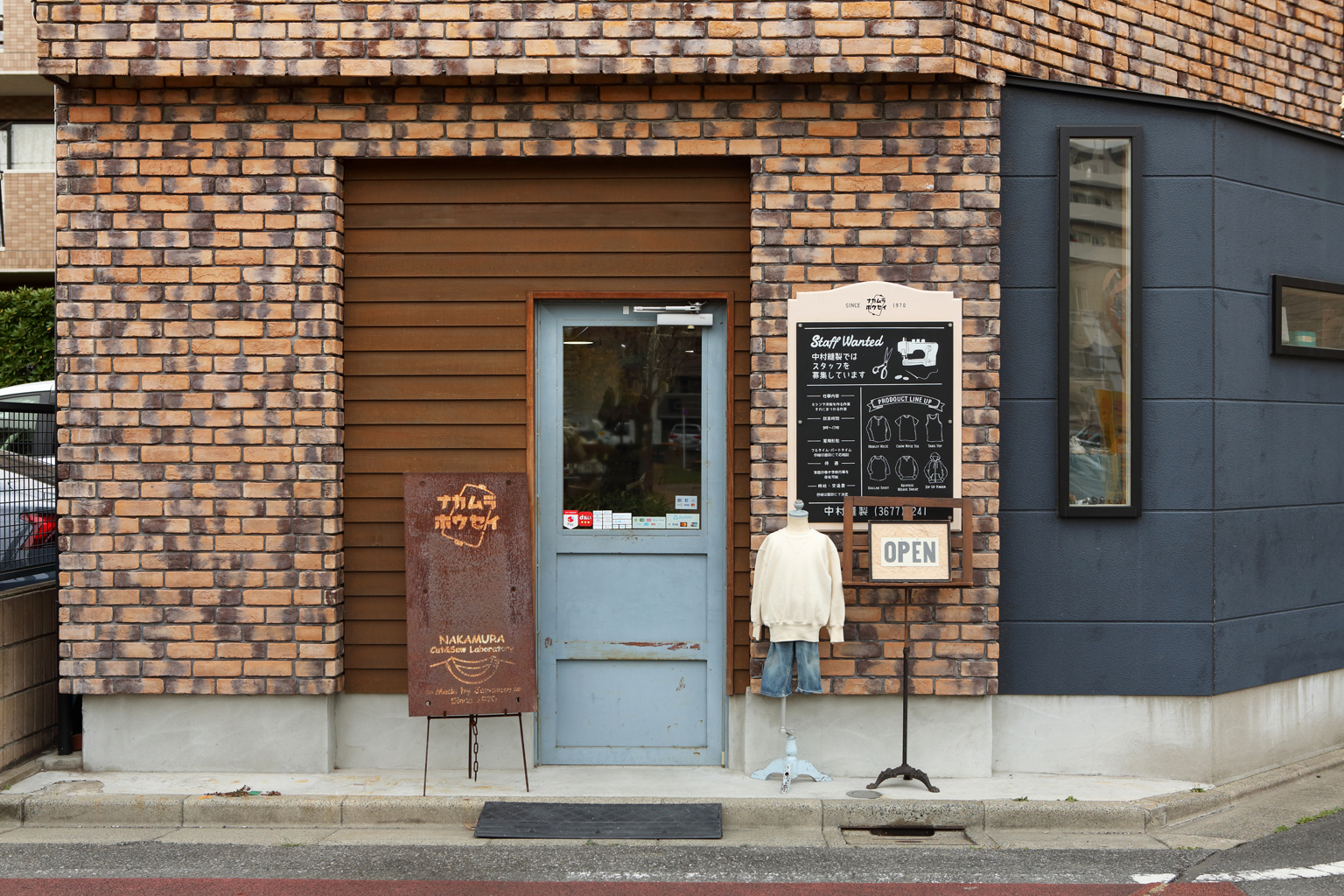
Renovated from what was once a garage, Nakamura Hosei Branch Store: Demise also offers select items in kids’ sizes, designed to be clothing families will want to cherish together.
Having spent years studying how garments were once made with longevity and care, Nakamura reflects on how he sees today’s fashion industry, where fast, mass-produced clothing has become the norm.
“There’s nothing wrong with relying on affordable clothes for everyday wear—I do think they serve a purpose. But we need to remember that cotton, which makes up most of our daily clothing like T-shirts, is a crop. It’s a living material that varies with sun and weather, with good years and bad, and no two harvests are alike.
We treat clothing too much like an industrial product. T-shirts sit closest to your skin and are washed again and again, so it’s worth considering their quality, comfort, and the journey they take to become what they are—not just the price tag.”
From cotton cultivation and harvesting, to spinning, knitting, sewing, and final display on store shelves, a T-shirt passes through countless hands. Why, then, is it so easy today to buy one at an extremely low price? Demise offers a rare opportunity to think about the hidden labor and materials behind the clothes we wear.
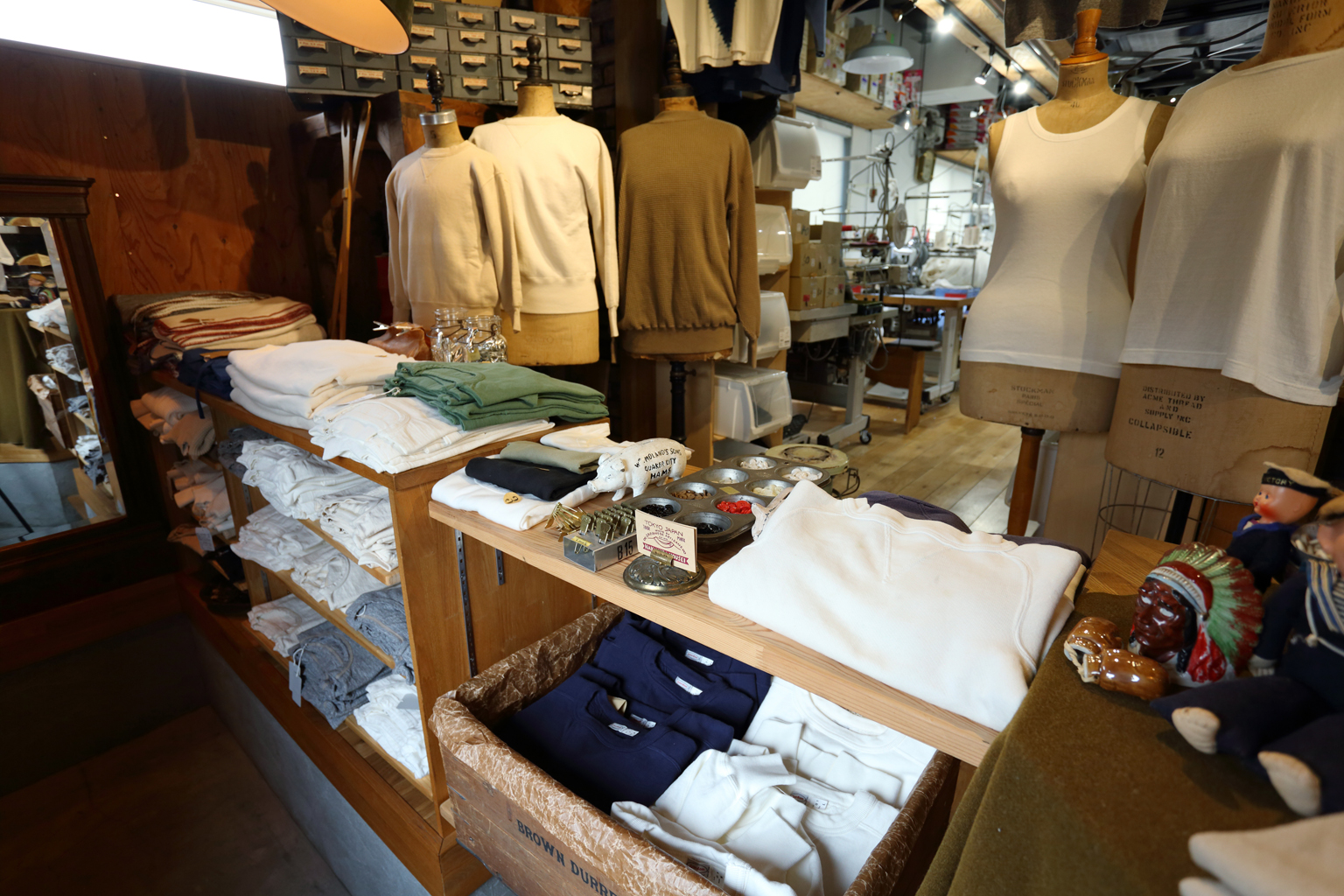
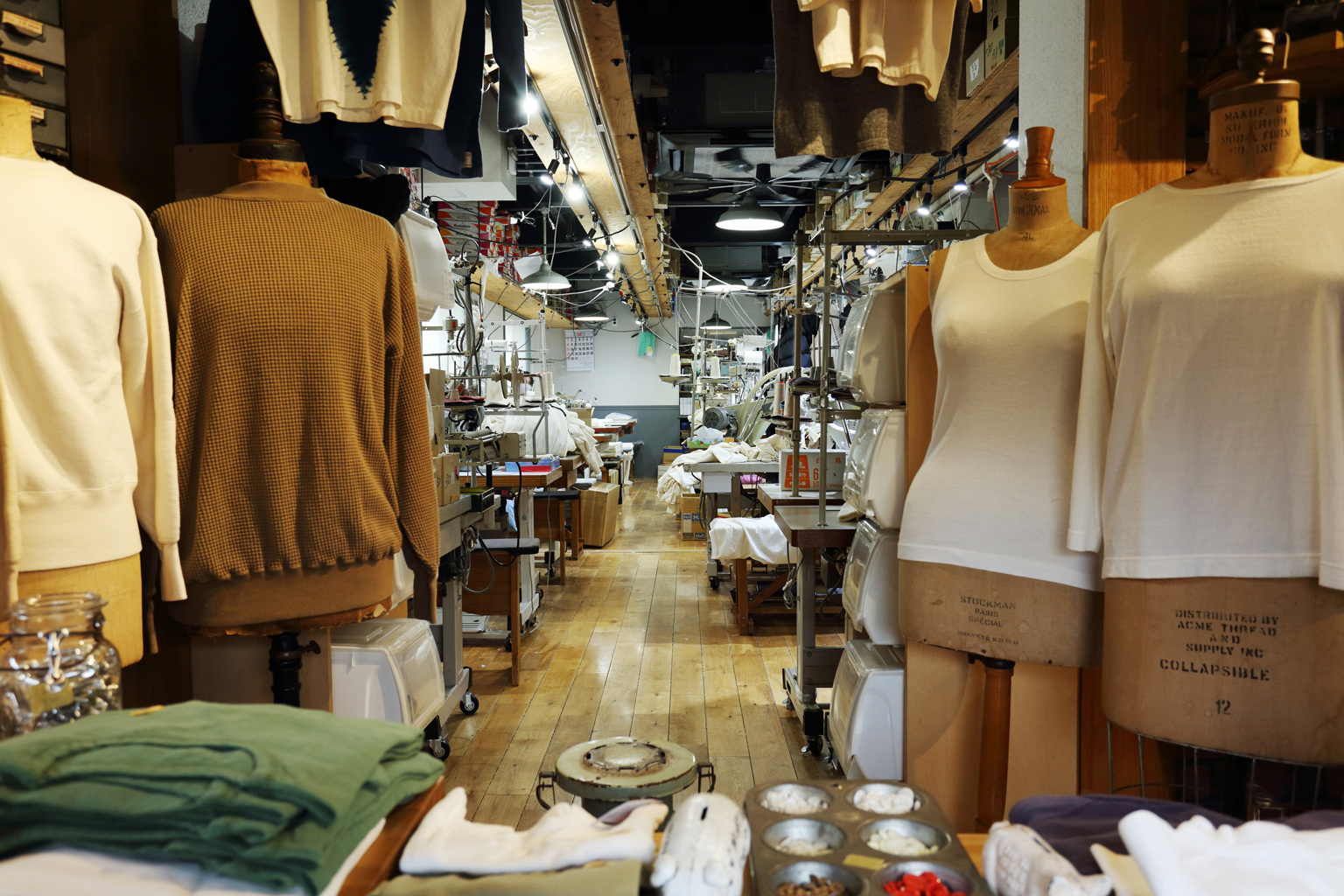
The idea for a “shop with a view of the sewing floor” came from Nakamura’s wife, who has a background in apparel and a deep understanding of industry logistics. She now supports production as one of the factory’s sewing professionals.
“In an age where cheap clothing fills everyday needs, the fashion industry is facing real questions about its social role. But we don’t make clothes just to sell them. Clothing is part of culture; it means something. That’s why we feel such a responsibility to make pieces that truly carry that meaning.”
To Be Someone They One Day Call “The Meriyasu Guy”
When asked about running a sewing factory in Edogawa City, Nakamura’s answer is crystal clear. While many companies move manufacturing to regional or overseas sites and keep only a headquarters in Tokyo, Nakamura Hosei has chosen to stay firmly rooted.
“Yes, this is my hometown, but that’s not the only reason. With transportation networks as developed as they are today, it doesn’t really matter whether your factory is nearby or far away—it’ll still take hours to travel to a client. But many of our clients’ design offices are based in central Tokyo. Being here in Edogawa means they can just drop by. We can look at materials together, walk through the factory, and exchange ideas quickly. That proximity is a huge advantage.”
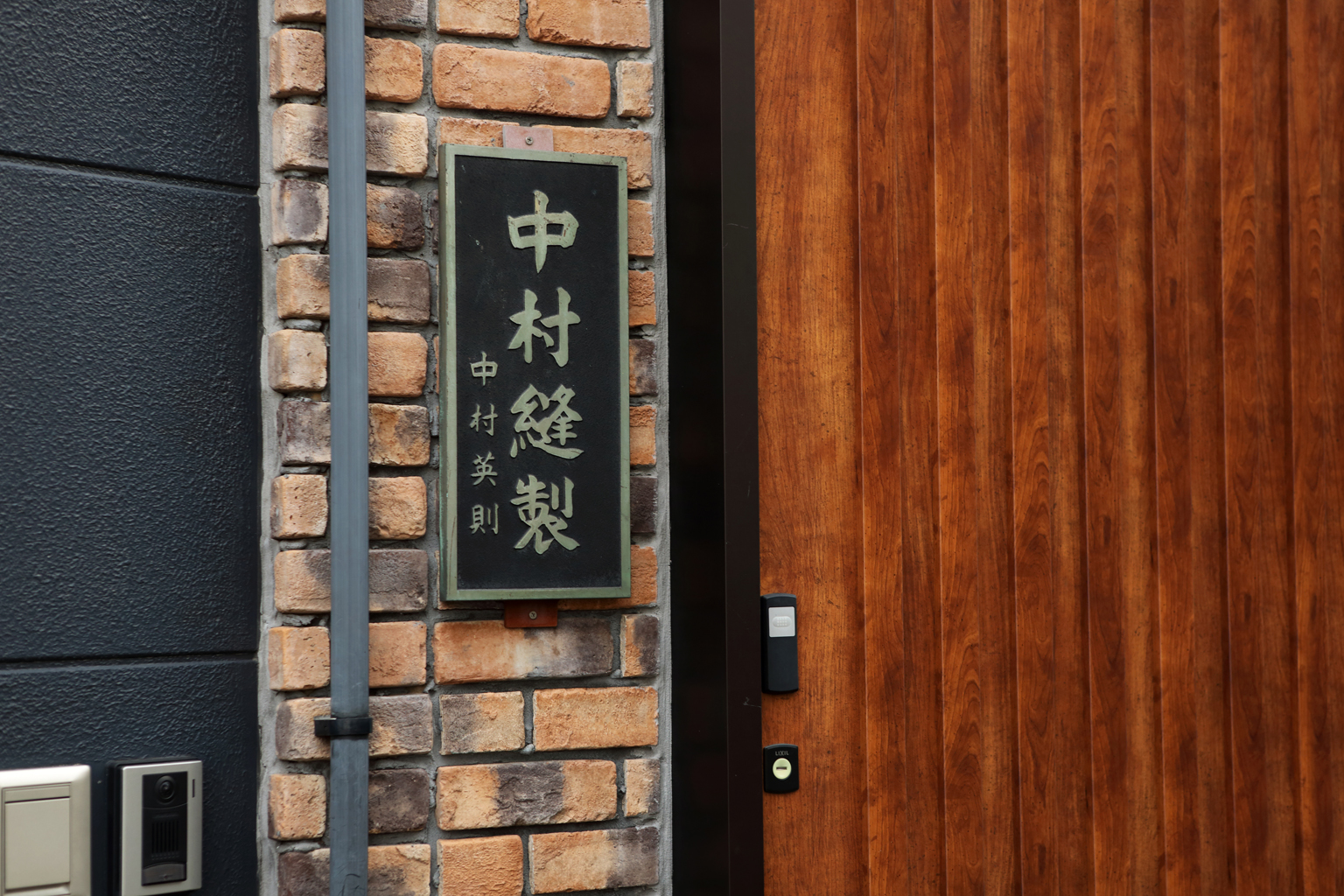
The sign outside Nakamura Hosei radiates quiet dignity. Beneath the company name is the name of founder Nakamura Hidenori.
One of Nakamura’s goals in the near future is to open a second factory space, even more focused on production. He hopes to balance OEM manufacturing with an expanding line of original products and eventually operate a flagship store built around the brand.
“I want to create a space where we can share what we believe in, what we want people to feel, and where people can dream a little. And someday, if someone asks, ‘What kind of person is Nakamura?’ I’d love for them to say, ‘He’s the meriyasu guy.’”
That answer would be a badge of honor, not just as a craftsman who has devoted himself to knit fabrics, but as someone who, like a jazz musician, approaches clothing with creativity, fluidity, and soul. It would also speak to a kind of character: quiet, timeless, and enriched by the passage of time.
Through every garment they produce, Nakamura Hosei continues to question and celebrate the value of clothing—and what it means to make something truly worth keeping.
Writing: Kiuchi Aki
Photos: Takeshita Akiko
Introduction of the Artisan
Nakamura Hosei was founded in 1970 in Edogawa City by Nakamura Hidenori, who had started a home-based sewing business with his wife. Today, their son Nakamura Takayoshi serves as second-generation president. For over 50 years, the factory has specialized in high-quality knitwear (cut-and-sew), collaborating closely with knitters, dye houses, and finishing workshops. With a production system that spans fabric development, patternmaking, cutting, sewing, and dyeing, Nakamura Hosei handles end-to-end manufacturing; its core business lies in OEM services for apparel makers. In 2019, the company opened a small in-house store, Nakamura Hosei Branch Store: Demise, on the first floor of the factory. Guided by a philosophy of “Made in Japan,” the team continues to pursue enduring, meaningful garment-making.
・Nakamura Hosei
・1-43-8 Mizue, Edogawa City, Tokyo

